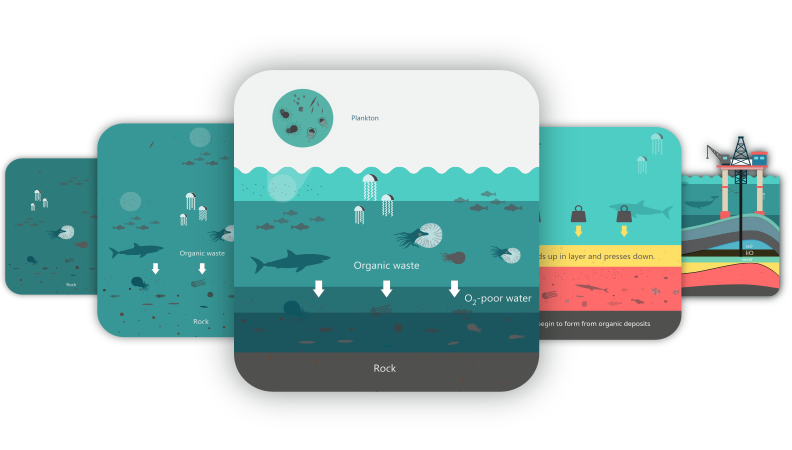By transitioning from plastic consumption we can shift from petro-capital participation to building our greenest visions and the regeneration of the biosphere.
It can be overwhelming to hear about all the ecological crises of our day. Climate change, deforestation, ocean acidification— they make the problem of plastic pollution seem minor issue in comparison! However, like all our ecological issues, plastic pollution is a symptom of our petro-capital economy– the way our society is powered by fossil fuels.
Of all ecological issues, this makes plastic unique.
Through the plastic that passes through our hands each day we can touch— and impact— the petro-capital economy that looms behind it all.
And, precisely because we all use it, plastic provides an unprecedented opportunity for collective action. Our every plastic choice, compounded together with everyone elses, results in factories spinning, trucks transporting, and oil refined– or, not.
What we do with our plastic, as it spins or slows the petro-capital economy, has big ecological consequence.
Our daily plastic enables us to make small yet meaningful choices to reduce our participation in the petro-capital economy behind it. Its a shift from adding CO2 and plastic to the biosphere to removing and preventing them both.
But even more significantly, as a versatile raw material-- once reclaimed and put on a different trajectory, can enable us to build our greenest visions: the very gardens, homes and structures that will compose the green world for all earthen beings that we all long to live within.
This constructive transition is the goal of ecobricking! It is a shift from the greying impacts of petro-capital participation to our regenerative living.
From Zero Waste to Regenerative
Imagine a world where the very way we live is steadily enriching the ecosystems around us.
Imagine if our homes, companies, and corporations resulted in the removal of plastic from the oceans and the regeneration of forests. Reducing our processes that harm and pollute is an important first step. However, even more important is increasing the ways in which we contribute to the greening of the biosphere. The Earth has given us a great example over the last billion years on how to do just this!

We observe that our consumption and production of plastic is rooted in the global petroleum and capital powered economy.

Before we were simply focused on reducing our grey impacts (i.e., “reducing footprints”, “zero waste” and “carbon neutral”). However, guided by the Earth’s ways, we can instead focus on increasing our green impacts. In the Ayyew spirit, our green contributions can go many times beyond our grey. In this way, we can move our households and enterprises into ever greener harmony with the cycles of life.
This is what we call, regenerative living.
“When you sit in council for the welfare of the people, you must not think of yourself or of your family, not even of your generation. Make your decisions on behalf of the seven generations coming, so that they may enjoy what you have today.
— Oren Lyons (Seneca), Onondaga Nation
The Green Impact of Ecobricking
Ecobricking follows the Earth’s example in subtracting and sequestering carbon.
Plastic is a by-product of fossil fuel production. As the global petro-capital economy steadily spins down, there is, alas, much plastic still to come. Ecobricks are a way that everyone can help secure this plastic and speed up the spin down. When we pack our plastic into ecobricks properly, we are providing the valuable ecological service of keeping plastic out of the biosphere for the long term. We call this plastic sequestration.
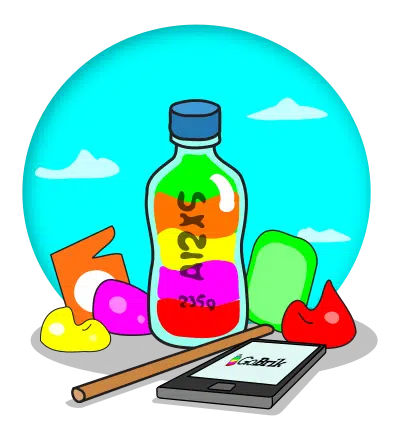
But there’s more!

Ecobricking also keeps plastic out of industry. This is important too: when our used plastic is recycled, dumped, or incinerated, it must be transported and factories must spin. These processes are energy, capital, and carbon intense. By keeping plastic out of industry we prevent more fossil fuels from being extracted and burned.
Ecobricking also raises our consciousness about the dangers of plastic and the impact of the petro-capital economy. As we become more aware of these dangers and impacts, the more we move on to greener ways of living. This in turn prevents future factories from burning fuels and creating more plastics.
Finally, ecobricks are building blocks. But not for conventional building! Ecobrick applications are guided by regenerative and earthen principles. With our ecobricks, we can set about building the very green new world we are transitioning to.
Plastic Transition
The process of reducing our plastic generation and increasing our green impacts is what we call ‘plastic transition’.
While living modern lives it is all but impossible to avoid consuming plastic and CO2 emissions. As the petro-capital economy spins down, we can do our part by ensuring our green impacts are greater than our grey.
While CO2 subtraction is crucial, it can also be abstract. After all, it can't be touched! Ecobricking, as a form of plastic and carbon sequestration, is clear, tangible, and immediate. You can touch it!. Because of plastic’s direct connection to the petro-capital economy, our plastic transition is an important indicator of our larger shift to regenerative living.
When we pack our plastic into ecobricks properly, we are effectively sequestering it– providing the ecological service of keeping it out of the biosphere. By tracking our plastic generation versus our ecobricking we can track our plastic transition. This is what we call the plastic transition ratio. It is an important indicator of where we are in our regenerative journeys.
Before we were simply focused on reducing our grey harm (i.e., “reducing footprints”, “zero waste” and “carbon neutral”) by focusing on our green impacts, we can way beyond. In the Ayyew spirit, our green contributions can go many times beyond our grey-- putting us on a journey of cultivating ever greener harmony with the cycles of life around us.
The Global Ecobrick Alliance has developed formulas, standards, and indicators to generate a Plastic Transition Score on the GoBrik.com app. By comparing our subtraction to additive plastic impacts we measure our transition.
🟢 Determine your transition score: Sign up for a GoBrik account
The Plastic Transition Score
By comparing our year’s green and grey impacts we get a simple score to show our plastic transition.
The Global Ecobrick Alliance has developed a Plastic Transition Score to track plastic transition on its GoBrik.com platform. All user accounts on our GoBrik generate our user’s score based on responses to registration questions. Scores are calculated by household– families or groups of people living under the same roof.

The first step is simple yet crucial: assessing how much plastic one’s household generates!

Afterall, how can we tell if we’re transitioning from plastic if we don’t know how much we’re generating in the first place?
Only once we know how much plastic we’re consuming each month and year and we meaningful work to reduce it.
Once we’ve assessed our grey impacts, we can focus on increasing our green. By tracking our plastic sequestration activities we can mindfully increase our subtractive plastic impact. This is the basis of the Plastic Transition Score.
A household score is calculated with several factors: Your plastic monthly generation and your household ecobricking and household offsetting. These are measured month by month over the course of a year.
GoBrik uses a per capita algorithm to compare your household to your country’s per capita average. Estimate how you compare to others in your country and GoBrik does the rest using peer-reviewed scientific data.
Alternatively, you can manually track and disclose your plastic generation yourself. Many ecobrickers do this with a two basket system. Over the course of the month, the plastic that they consume they clean, dry and put in a Weighing basket. At the end of the month, they weigh this plastic, and move it to their Ecobricking Basket. From this basket they grab the plastic for their ecobricks. Meanwhile, they begin the month anew filling the Weighing Basket with their consumption. As the month goes by, they also pay attention to the plastic they give away to others or use outside their home (produced plastic).
Each month, GoBrik then calculates the net amount of plastic you’ve consumed so far this year.
GoBrik then compares this to the net weight of a user’s authenticated ecobricks made in that year as well as any offsetting that the user has done. A similar process is used for companies in the GEA Catalyst program. Your green impacts are divided by your grey impacts for the year so far.
The resulting Plastic Transition Score is then calculated as a percentage of zero waste.
In other words, if you’re generating and ecobricking exactly the same amounts of plastic, then your score is 100 (i.e., 100% of zero waste). A PTR below 100 shows your household is still putting plastic into the biosphere. A score above 100 means you are removing plastic from the biosphere.

Authenticated Plastic Sequestration
Plastic sequestration enables many exciting ways to have green impacts
The Global Ecobrick Alliance has developed a Plastic Transition Score to track plastic transition. All accounts on GoBrik now generate a user’s score. Scores are calculated by household– families or groups of people living under the same roof.
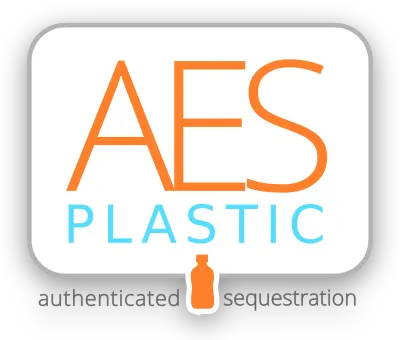
For individuals and companies who have very large footprints, there are other ways to accumulate green credits.

AES Plastic Offset credits can be purchased from the GEA on the GoBrik.com/offsetting platform. This is called “Plastic Offsetting”. By purchasing offset credits (tokens that represent plastic that has been sequestered) you can support the deep green work of those sequestering plastic and receive credit for a precise amount of plastic.
AES Offset credits can be purchased using regular money or with Brikcoins on the GoBrik platform.
There are various ways to earn offset credits:
- Validating: Validating that ecobricks have in fact been packed properly is an important part of sequestration. Through the GoBrik platform, validators can earn Brikcoins for the hard work of reviewing and authenticating.
- Brikcoins can be redeemed for the amount of AES plastic they represent.
- The GEA Catalyst Program: Our program for businesses enables you to catalyze ecobrick trainings in your community and receive credits for the ecobricked plastic that results.
- Selling Products and Services: Users can sell their products on the GoBrik store for Brikcoins. Brikcoins can be redeemed for the amount of AES plastic they represent.
- Becoming a Trainer: GEA Trainers can run courses on GoBrik and charge in Brikcoins for registrations. Brikcoins can be redeemed for the amount of AES plastic they represent.
🟢 Learn more: The GEA Catalyst Program
Enterprise Plastic Transition
Imagine a world in which all our enterprises, large and small, account for not just their financial expenses and revenues, but also their grey and green ecological impacts.
Plastic transition is particularly important for companies that still rely on plastic and petroleum for their operations to ensure they are net green. Tracking and accounting grey and green impacts is the first step.
Tracking plastic generation is in particular relevant to companies and organizations that use plastic in their business practices– whether that involves office meals and office supplies, the packaging of products, or the products themselves.
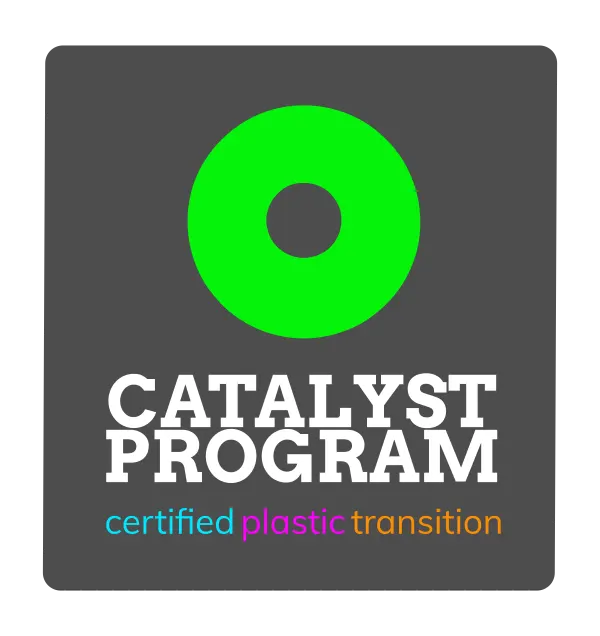
Once accounted for, there are many exciting ways in which enterprises can use green plastic impacts to balance off their grey.

Beginning by ecobricking staff plastic consumption, an enterprise can spark the work of reducing its plastic generation. Enterprises can then work with their local communities to catalyze further ecobricking. The ecobricking that comes from such catalyzation is a green impact that the Global Ecobrick Alliance attributes as a green offset to companies. Enterprises can also purchase plastic offset credits, which through the Brikcoin blockchain, directly correspond to authenticated plastic sequestration.
Tracking plastic transition is an essential key performance indicator for businesses serious about going green and transforming their negative impact on the biosphere to a positive one. The GEA Catalyst program and our GoBrik tracking software are designed to empower enterprises to this purpose.
🟢 Learn more: The GEA Catalyst Program
Learn More
Plastic transition is based on several key regenerative concepts.
- Following the Earth’s example to be certain our processes are green
- Understanding the way that Earth sequestered its carbon to green the biosphere
- The concept of plastic sequestration
- Following regenerative principles.
- The regenerative concept of Ayyew
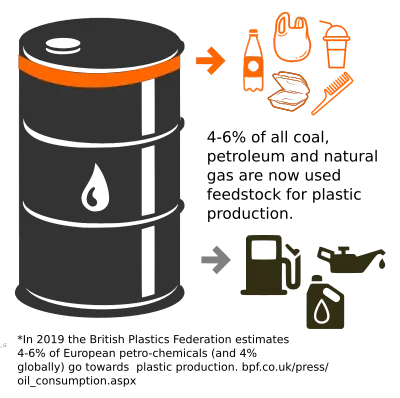
Plastic & the Petro-Capital Economy
As petroleum is refined into the fuels that power our economies, the left-over chemicals are used to produce plastics. Learn by retracing the billion year back-story of today's plastic.
Plastic's Long Story

Regenerative
Plastic transition is a regenerative concept. Rather than see plastic as ‘waste’ we can see it as an ayyew opportunity to move towards ecological enrichment.
About Ayyew
Etika Sila Bumi
Brikcoin didasarkan pada nilai yang dihasilkan dengan mengikuti contoh konsentrasi karbon dan pengayaan ekologi di Bumi.
Pelajari Lebih Lanjut
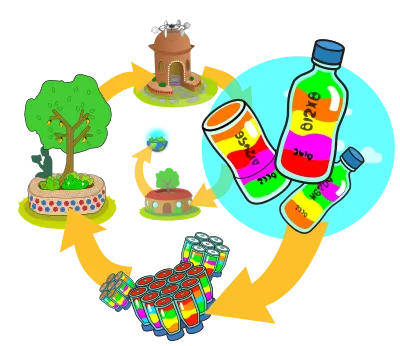
Desain Spiral
Aplikasi Ecobrick mengikuti prinsip desain Earthen untuk memasukkan plastik ke dalam siklus penggunaan kembali yang memperkaya.
Pelajari Lebih Lanjut
Akuntansi Ekologis
Memperhitungkan dampak ekologis abu-abu dan hijau merupakan komponen kunci dalam upaya regeneratif.
Lihat Milik Kami
